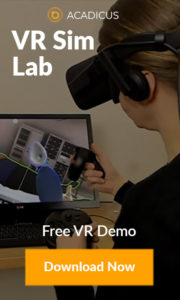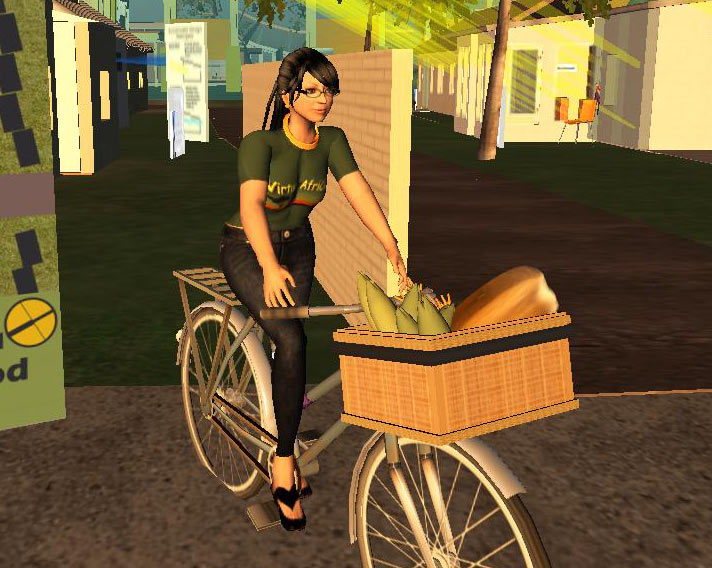
The Delaware Technical & Community College has made a strong and successful debut in their use of virtual worlds in architectural education through a project led by Professor L.C. Weaverling’s (Profesora Farigoule in SL) ‘Architectural Design: Foundation Studies I’ class.
I met L.C. while touring another architectural student project led by Judy Cockeram from the University of Auckland (more on their work coming soon!), who is also exploring the use of virtual worlds in architectural education. After renting some land on Architecture Islands, their parcel rapidly transformed from an empty grass field to an array of design ideas by students which quickly evolved over several weeks into the final presentation it is today.
The students collaborated with a Second Life community called ‘Uthango,’ (creators of the Virtual Africa project) to investigate proposals for sustainable design housing prototypes for use in the redevelopment effort in Cape Town, South Africa to replace existing marginal housing in the township areas.
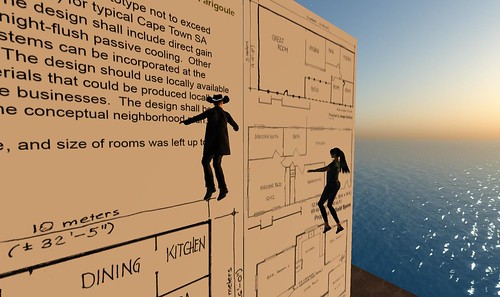
“One reason I picked this project,” L.C. explains, “is that I realized all of my students had been born just around the time of South African abolishment of apartheid and they had no idea of how significant that was for history of world.”
As for using Second Life, the biggest advantage to using the multi-user, online virtual environment, L.C. tells me, was that “The students could see their problems instantly, so convincing them of design challenges was not as much of an argument.”

I asked her if she had any trouble motivating students to work in Second Life, and she said that she made it a requirement. “Some students begged for the option to build (physical) models instead, but I did NOT relent – and guess what… they discovered it wasn’t so bad!”
The students were not only able to explore and share their design ideas in an immersive medium, but were also able to interact with a real ‘client’ at Uthango, who could provide feedback throughout the project. As such, the students learned a lot about the culture of South Africa, and had to adapt their designs throughout the semester to better accommodate local conditions.
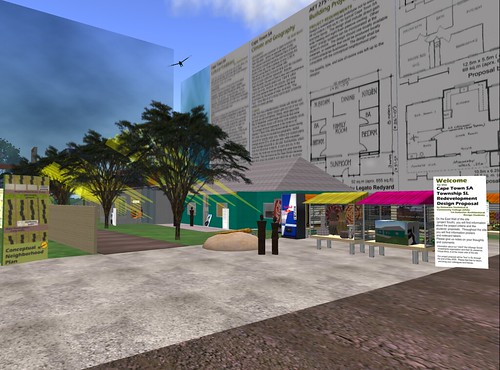
“Even though we halved the typical U.S. house size, our 90 square meter houses were still too large for the small redevelopment houses they require.”
The students also visited the ‘Virtual Africa’ project in Second Life to learn more about the culture.
When asked if there were any other challenges, L.C. mentioned several issues with having computer access. In one case, a student’s spouse would not allow them to use Second Life on their home computer, since it was perceived as being just a video game.
L.C. explains, “I also had to get SL on some open lab computers which met with initial resistance, but when I wrote my justification, I got support from the Dean right away. I also had to borrow laptops from all over campus in order to make this work. So my success is due, in large part, to the generosity from other departments at Delaware Tech who gave up their equipment for me to use.”
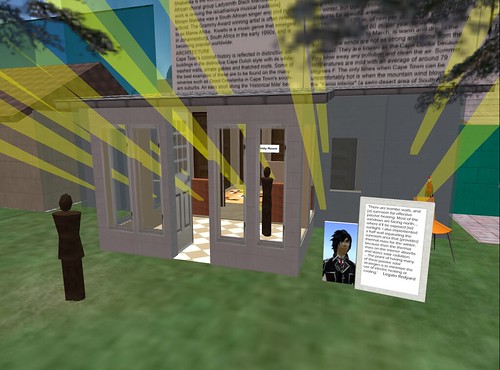
We talked about academic perception of virtual worlds for architectural education, and how it compares with professional adoption within architecture firms.
“A lot of my colleagues are overwhelmed by normal changes in CAD – our eventual migration to BIM for instance, that they would love to know more about it, but they have too much other on their plate. But I explain that this is not like BIM. BIM is replacing in a major way our existing way of doing work, whereas virtual worlds are going to be something adding a new dimension – something different, not replacing – not just a drafting or working drawing tool. It will redefine the role of the client, as you well know with Wikitecture.”
Indeed I do. I think the work L.C. and other architectural educators are doing in virtual worlds is laying the foundation for something new, something very exciting. When asked if she will continue teaching in Second Life, L.C. said “I am doing it all over again in September 🙂 – this time with even more students.”

You can learn more about the student’s projects on their class blog HERE.
Here is an invitation to view the project:
“On behalf of our first year Design Fundamentals studio students, I would like to invite you to visit their final design project in Second Life, which is a Cape Town SA township redevelopment housing proposal. Our site will be open from May 13 – May 29 , 2009 on Architecture Island.
We have set up notecard takers for each project and various places on the site, in order to enable our visitors to be our virtual jury. I will be on site on Thursday, May 14 from 4am-12pm and 4pm-7pm SLT (corrected times). The students will be dropping in to visit on Thursday, May 14 as well. If you would like to schedule a guided tour at any other time, please IM me, and I will be glad to meet you at a time convenient to us both.
The students conducted a project research phase prior to beginning their design in which they studied South African history, culture, geography, climate, and built environment. They were then tasked with developing a proposal for redevelopment of the informal settlements surrounding Cape Town that are a legacy of the former apartheid era. The South African Housing Development Agency has a goal of transforming or eradicating all informal settlements by 2014, and is striving to deliver over 250,000 housing units per year. Through Second Life, we were able to collaborate with Uthango Social Investments, a Cape Town non-profit NGO that is working in real-life on this and other poverty reduction micro-enterprise projects.
The students collaborated on developing an overall neighborhood plan, and then each student individually designed a housing prototype to fit within this plan. The criteria for the design were few and straightforward: Design a house for a typical Cape Town township family not to exceed 90 sq. meters and utilize sustainable design principles in heating, cooling, and material selection.
We are looking forward to your visit, and especially to your comments. The students will return at the end of May and collect their individual comments, and I will summarize all other commentary for them.
Yours – Profesora Farigoule
Faculty, Delaware Technical & Community College, Delaware USA””
Here is the SLurl to visit the site: http://tinyurl.com/qwdhbd
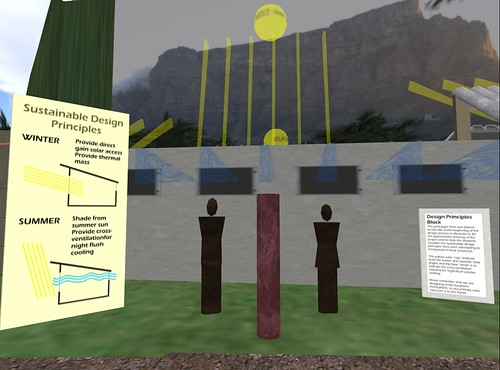
If you are using virtual worlds in architectural education, or are thinking about doing so, please consider attending a session on Architecture Island next Friday the 22nd, called “The Learning Curve for Architectural Education in Virtual Worlds.” More information can be found HERE. We have a list of confirmed participants is all but guarantees the session to be worthwhile, informative, and hopefully inspirational.

